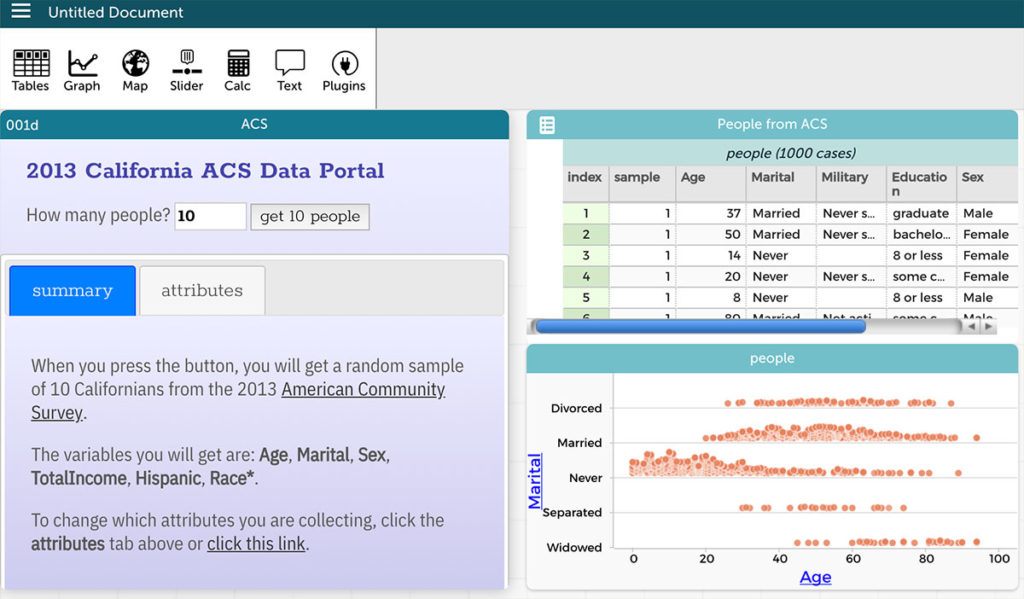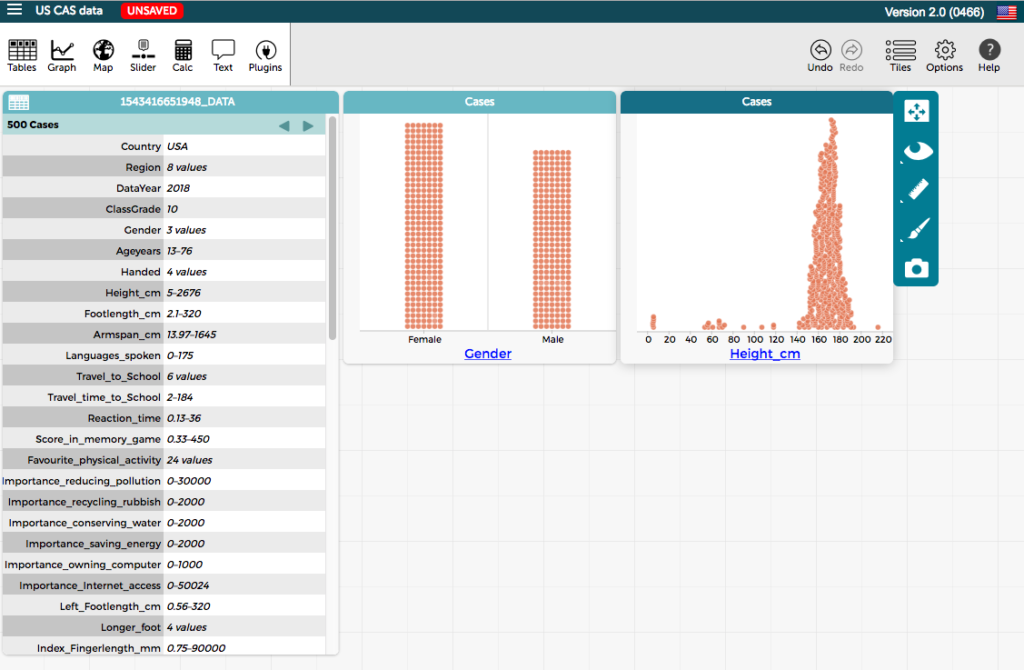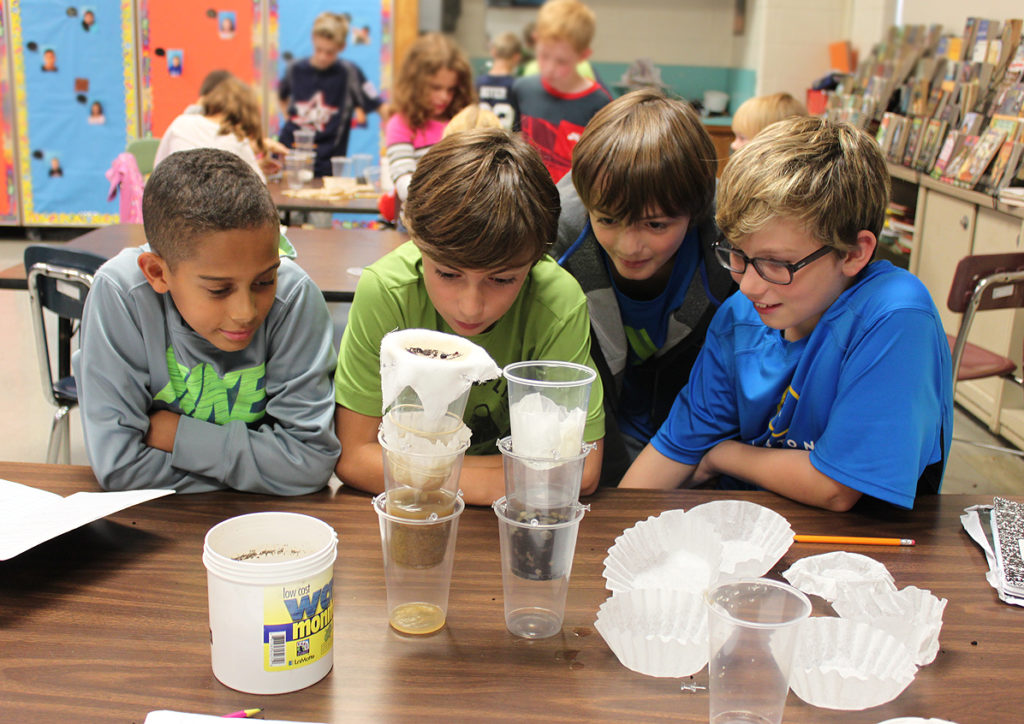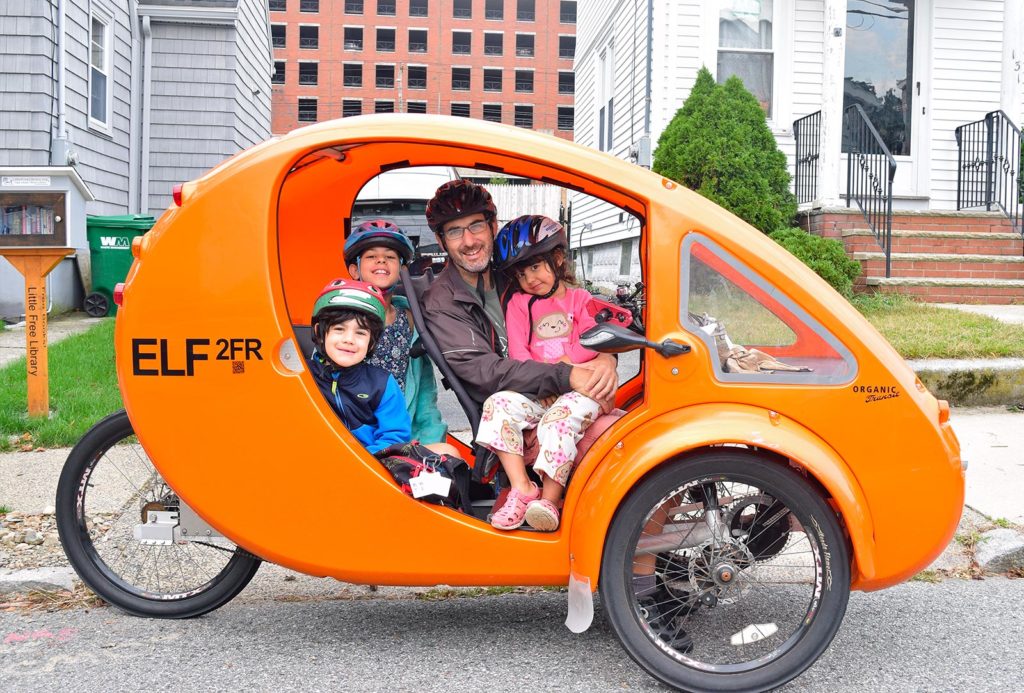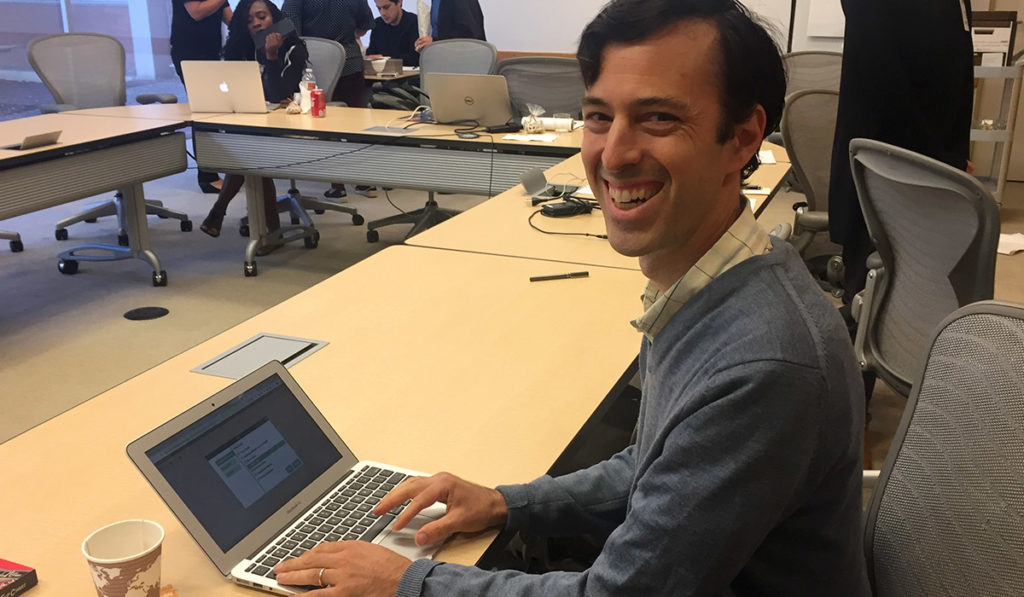Category: 2018
“There is a time, much greater in amount than commonly allowed, which should be devoted to free and unguided exploratory work (call it play if you wish; I call it work).” – David Hawkins, 1974* We often get a feel for things by messing around with them. When you toss a paper airplane in the […]
On November 14 Concord Consortium’s own Bill Finzer gave a webinar for the American Statistical Association entitled “Making Data Moves Using Free Online CODAP Software with Census at School Data.” View the webinar slides or watch the video recording now, plus get free resources: Data cleaning report for Census at Schools from students at UCLA […]
Find out how high school students can design and evaluate efficient and affordable solar power systems—even for their own school—in the November/December 2018 issue of The Science Teacher. Co-authored by Concord Consortium researchers Jie Chao, Charles Xie, and Corey Schimpf, with education consultants Joyce Massicotte and Jeff Lockwood, and Stoughton High School science teacher Craig Beaulieu, […]
Fig. 1: Thermal images in the GalleryGallery is a tool within the SmartIR app for users to manage their own thermal images, temperature graphs, and other data within the app. Unlike the default gallery in the operating system, SmartIR Gallery shows onl…
An article in the October 2018 issue of Science and Children looks at groundwater and the natural processes of infiltration as a vital means for cleaning our water. Co-authored by Jonathon Kilpatrick (Greenwood Elementary School in Pennsylvania), Nanette Marcum-Dietrich and John Wallace (both of Millersville University of Pennsylvania), and Concord Consortium Senior Scientist Carolyn Staudt, […]
Figure 1. Software architect Scott Cytacki with his three kids in their solar-powered ELF. You may not know Scott Cytacki by name but if you’ve used STEM Resource Finder curriculum materials or an InquirySpace investigation or a Model My Watershed activity, or any number of our educational resources, you can appreciate Scott’s deep commitment to […]
Most teachers have a first-year-teaching story. Few have one like Matthew d’Alessio’s. His first teaching experience was at California’s notorious San Quentin State Prison, the largest prison in the country, where he taught math and geology in the Prison University Project, the only college program inside a California prison. “The students were among the most […]
The Infrared Street View is an award-winning project recognized by the U.S. Department of Energy and subsequently funded by the National Science Foundation. The idea is to create a thermal equivalent of Google’s Street View that would serve as the star…
Imagine being guided by a buzz on your smart watch, suggesting you try a different path in the museum you’re visiting. Or your mobile device that knows your favorite types of activities nudging you to move outside your comfort zone and explore new genres of art or recommending the next curiosity to examine. The Conference […]
Location-based augmented reality (AR) games such as Pokemon Go have become popular in recent years. What can we learn from them in order to make SmartIR into a fun science app? In the past week, I have been experimenting with AR in SmartIR using the lo…
